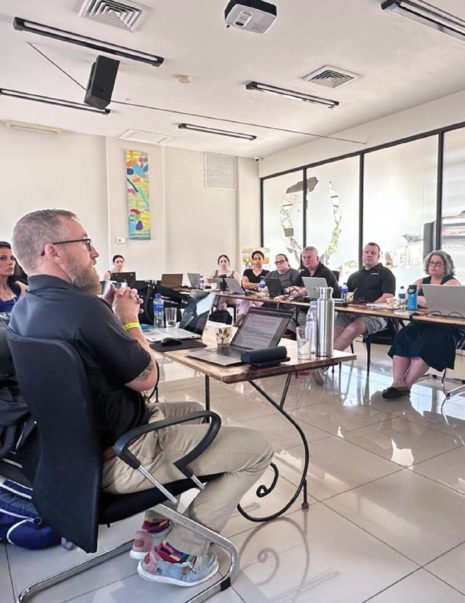First presented at SQA 2022 FDAQRC’s Project Manager, Amanda White examines how poor-quality culture can take a toll on your organization.
A Road Map To Improve
Quality Culture
Imagine a cascade of events; a lackluster push around novel drug offerings, questionable department performance, lack of Continuous Improvement Methodology, and the list keeps expanding…
Forbes examines these omens of poor Quality Culture within the aptly name article ’10 warning signs of Quality Culture1.’ Perhaps the most jarring for this writer would be a missing-in-action Quality Vision or one that bears zero linkage to established Business Strategy. Even more concerning is where Quality isn’t a problem until it becomes -wait for it- problematic.
A study by Harvard Business Review2 also concludes that poor Quality Culture impacts the bottom line and suggest Departments/Leaders/Managers examine the following:
- Cost accumulated while determining the degree of conformity to quality specifications
- Internal failures discovered before the product reaches the customer
- External failures detected after the services reach the consumer
Turning the ship around before a collision with the metaphorical Poor Quality Culture iceberg is possible, but not without concerted deliberate action. Re-centering the Quality Mission in alignment with your Business Goals will put momentum behind the Cultural shift while driving customer loyalty and shoring up any financial losses.

Introducing the Plan-Do-Study-Act (PDSA)
Assessing your current state serves as a baseline with which to inform intended and future strategies. Collecting objective evidence also serves to minimize antidotal, nebulous gut-feelings; while these subjective views may be indicative of problem points, groups stand to maximize impact by using empirical data.
The initial phase of the Plan-Do-Study-Act (PDSA) model3 guides users to begin any Quality Improvement intervention with Planning. Data collection can be applied to a number of scenarios, such as: driving increases around Client/Customer surveys, achieving certain product specifications or modifying processes. The Plan, Do, Study, Act (PDSA) model plays an important continuous role in creating a strong and successful Quality Culture.
Per your established procedures, ensure that the data are analyzed for patterns, shifts and trends. Transparency also shares an equally relevant role; communicating outcomes as driven by evidence supports goal-achievement and group cohesion.
Download The Poster!
In this poster, titled A Road Map to Improve Quality Culture, Amanda simplifies this process by walking you through critical thinking and things to consider when in the process of improving your Quality Culture.

Online Article
- ’10 Warning Signs of a Weak Culture of Quality’
forbes.com/sites/forbesinsights/… - ‘Culture of Quality’
qualitymag.com/articles/… - ‘Plan-Do-Study-Act (PDSA) Directions and Examples’
ahrq.gov/health-literacy/improve/…
Poster
- ’Workplace culture’…
shrm.org/resourcesandtools/tools-and-samples… - ’Practical Interpretation’…
asq.org/quality-resources/quality-glossary/… - ’PDSA model’…
ahrq.gov/health-literacy/improve/precautions/… - ’Poor Quality Cultural Indicators’
pubmed.ncbi.nlm.nih.gov/25057539/ - ’Designate specific indicators’…
qualityindicators.ahrq.gov/Downloads/Resources/… - ‘Anticipate any barriers’…
hbr.org/2014/04/creating-a-culture-of-quality

How to Secure Project Assignments with FDAQRC: A Guide for Consultants

Tips For Preparing & Hosting a Successful Audit

Regulating AI in Clinical Trials: What ICH E6(R3) Does (and Doesn’t) Say

Explores the Differences Between Auditors and Inspectors in the Clinical Research Industry

Competency Based Programs Contribute to Early Clinical Research Professional’s Training

15 Years of Excellence: FDAQRC's Journey and Future Vision

Tips for a Positive Outcome While Performing a Challenging Audit









